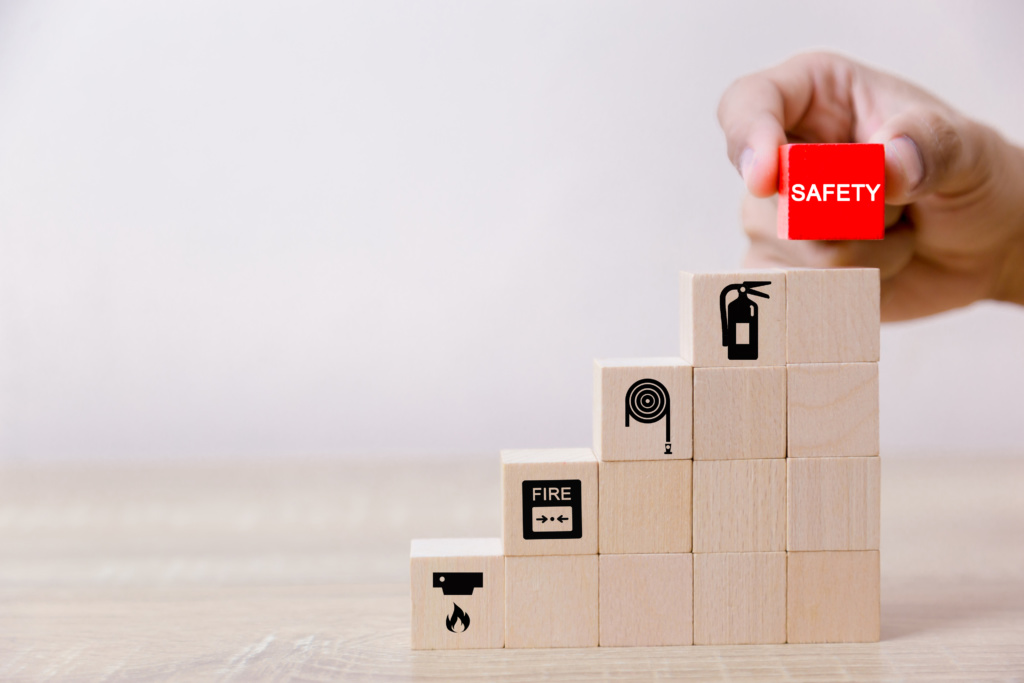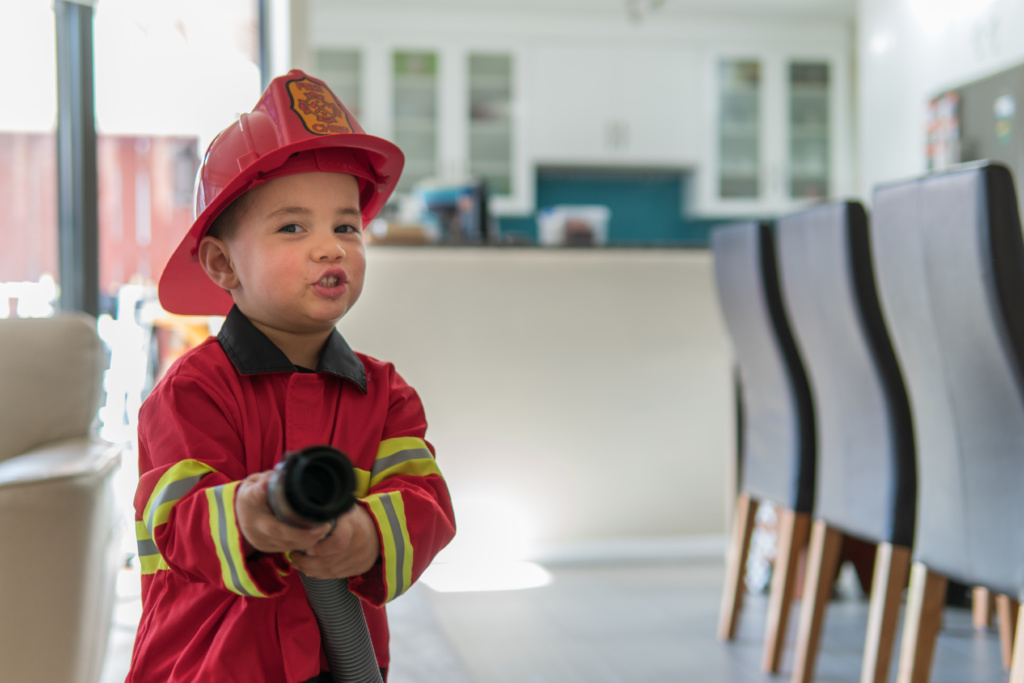Is Your New Home Fire Safe?
College Station Fire Department firefighters discuss how they keep their homes and families safe. By: Stuart Marrs, Captain
Moving into a new place is an exciting time and usually a lot of work. Whether you’re renting your own place for the first time or moving your family into a bigger home, CSFD has some simple advice to make sure your new place is fire safe.
Smoke and Carbon Monoxide Detectors
“Before you spend your first night in your new place, check for functioning smoke and carbon monoxide detectors,” said Assistant Fire Chief Tradd Mills. Smoke detectors should be in each bedroom and outside each sleeping area in the home. They should be mounted up high and tested once a month. Detectors with 9-volt batteries will chirp when the battery needs to be replaced. Detectors with a 10-year sealed battery will chirp when it is time to replace the entire detector.
“When I moved to College Station, I conducted a fire drill in my new home by pushing the detector’s test button and letting my wife and daughters practice their escape routes,” said Mills.
Carbon monoxide (CO) is a colorless and odorless gas that results from incomplete combustion in heating appliances.
“CO can be fatal because it replaces oxygen in your red blood cells,” explained Paramedic Mike Armstrong. “This results in your brain, heart, and other organs not functioning normally.” CO detectors should be installed in a central location outside each sleeping area and on every level of your home. Follow the manufacturer’s instructions for placement and mounting height. CO detectors will also chirp when batteries are low.
“If my CO detector ever alarmed, I would move to fresh air, call 911, and account for everyone in my home,” said Armstrong.
Fire Extinguishers in the Kitchen
The National Fire Protection Association’s (NFPA) safety slogan is, “Keep an eye on what you fry.” They say this because cooking fires account for 49% of all home fires.
“When you move into a new place, outfit your new kitchen with a residential dry-chemical fire extinguisher,” said Deputy Fire Marshal Derek Bishop. These extinguishers are small, affordable, and safe to use on all types of cooking fires, including grease fires. If you already have a fire extinguisher, check for a manufacture date or expiration date. And most importantly, make sure the extinguisher is accessible.
“I keep mine on the counter between the fruit bowl and paper towel roll. Fire extinguishers shouldn’t be under your sink hiding behind the Comet and Fabuloso!” said Bishop.
Dryer Exhaust and Dryer Safety
If you’re moving into a place someone has lived in before, remember to check the dryer exhaust duct. According to the NFPA, over 2,900 dryer fires are reported each year.
“I clean my lint trap after every load of laundry,” said Firefighter Lillian Rambo, “but I don’t think the person who lived here before me ever cleaned theirs. My dryer exhaust duct was almost completely clogged so I cleaned it when I moved in and now I check on it every few months.” Rambo also commented that she does not leave the dryer running when she leaves the house or goes to bed because even clean dryers can overheat.
Water Heater Temperature
We expect hot water to flow when we turn the “H” handle, but how hot is too hot? The temperature setting on your water heater can mean the difference between relaxing warmth and scalding burns.
“I never thought much about the temperature of my water heater until my son was born,” said Fire Marshal Eric Dotson. “When we moved into our new house, I made sure the temperature was below 130 degrees. Some water heaters are capable of 150 degrees, and that kind of heat can scald a person in under one second. Young children and older adults are at the biggest risk. I wasn’t going to take that chance.”
Doors, Windows, and Escape Routes
There are two options when escaping from a house fire: doors and windows. Every bedroom should have at least two ways out. When you move into a new home, make sure doors and windows function correctly.
“Can the windows be opened from the inside? Can the doors be unlocked from the inside without a key? Do my kids know how to escape? Can they do it in the dark?” Those are the questions Paramedic II Stanley Stephenson asked himself when he bought and remodeled his new home.
“I also taught my kids to close doors and windows behind them as they make their escape. Closing doors slows the spread of smoke and heat throughout the house and will give others a better chance of escaping. Not to mention it will make the firefighter’s job easier when they arrive!” said Stephenson.
For more information on CSFD public education and risk reduction programs, visit cstx.gov/fire.

